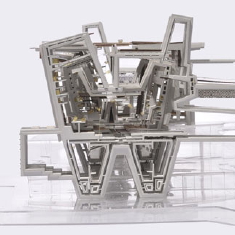Ayaka Suzuki Y4
PICTURE HOUSE FOR THE TURKISH MOTION IMAGE | Istanbul | Unit 21 | 2011 Snow; “it made the city look new, not only covering up the mud, the filth and the neglect, but by producing in every street and every view an element of surprise…” Situated amongst the long-lost memories of the celebrated past of the city, the Picture House reflects how the novelist Orhan Pamuk remembers his black-and-white childhood




